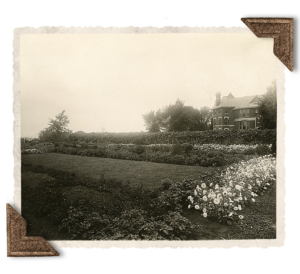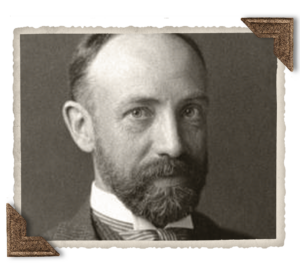Blending Two Styles
 Brucemore’s landscape reflects a blend of two popular approaches to landscape design prevalent in the early 20th century: the Beautiful Approach and the Prairie Style.
Brucemore’s landscape reflects a blend of two popular approaches to landscape design prevalent in the early 20th century: the Beautiful Approach and the Prairie Style.
The Beautiful Approach was influenced by traditional English Gardens. It emphasized vast, sweeping lawns and formal entrances that hid the working part of the estate from public view. Proponents of this style believed an attractive, well-maintained landscape was necessary for the moral improvement of individuals and society.
The Prairie Style was a uniquely midwestern landscape style that emphasized the retention of natural landforms and native plants, colorful seasonal plantings, and outdoor “rooms.” Advocates of this style also held strong beliefs about nature’s positive influence on moral character.
Meet the Designer
 The Douglas family hired notable landscape designers, gardeners, and architects to transform Brucemore into a sprawling country estate after purchasing the property.
The Douglas family hired notable landscape designers, gardeners, and architects to transform Brucemore into a sprawling country estate after purchasing the property.
Beginning in 1906, Irene Douglas hired Ossian Cole “O.C” Simonds to make numerous changes to the landscape, which continued into the 1920s. He co-founded the American Society of Landscape Architects and was well known for his work in the Chicago area.
QUIZ: Which of these iconic Chicago venues includes designs by O.C. Simonds?
-
- Lincoln Park Zoo
- Chicago Botanic Garden
- Garfield Park Conservatory
- Graceland Cemetery—Simonds’ work on this cemetery, where Marshall Field and other notable Chicago residents are buried, led to his nickname, “the dean of cemetery design.”
Simonds’ designs combined the beauty of natural topography with a scientific understanding of nature, helping to develop and refine the Prairie Style in the early 20th century. Brucemore remains a remarkably intact example of his work today. Because surviving examples of Prairie Style country estates—especially those designed by O.C. Simonds—are exceedingly rare, Brucemore’s landscape is both regionally and nationally significant.
